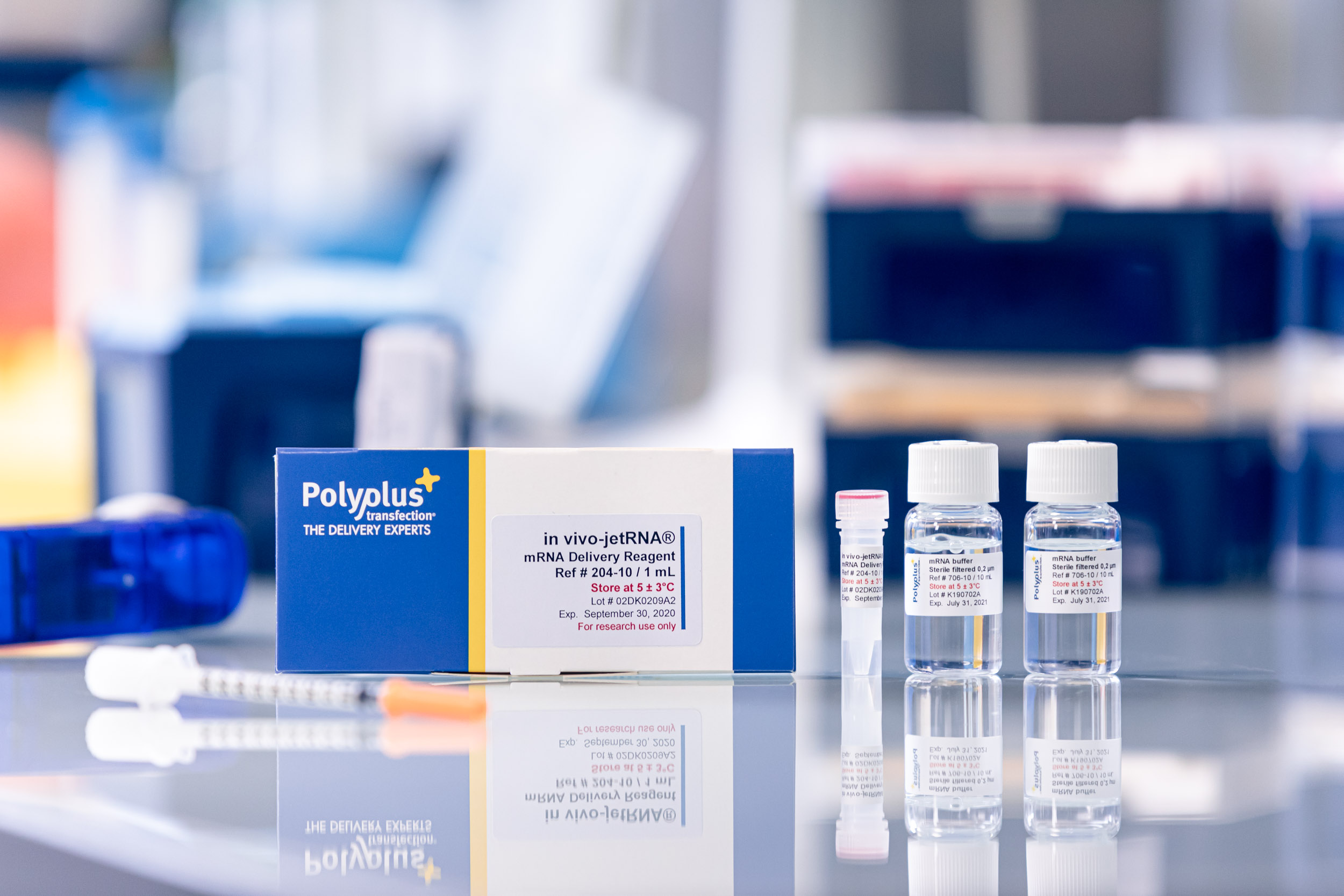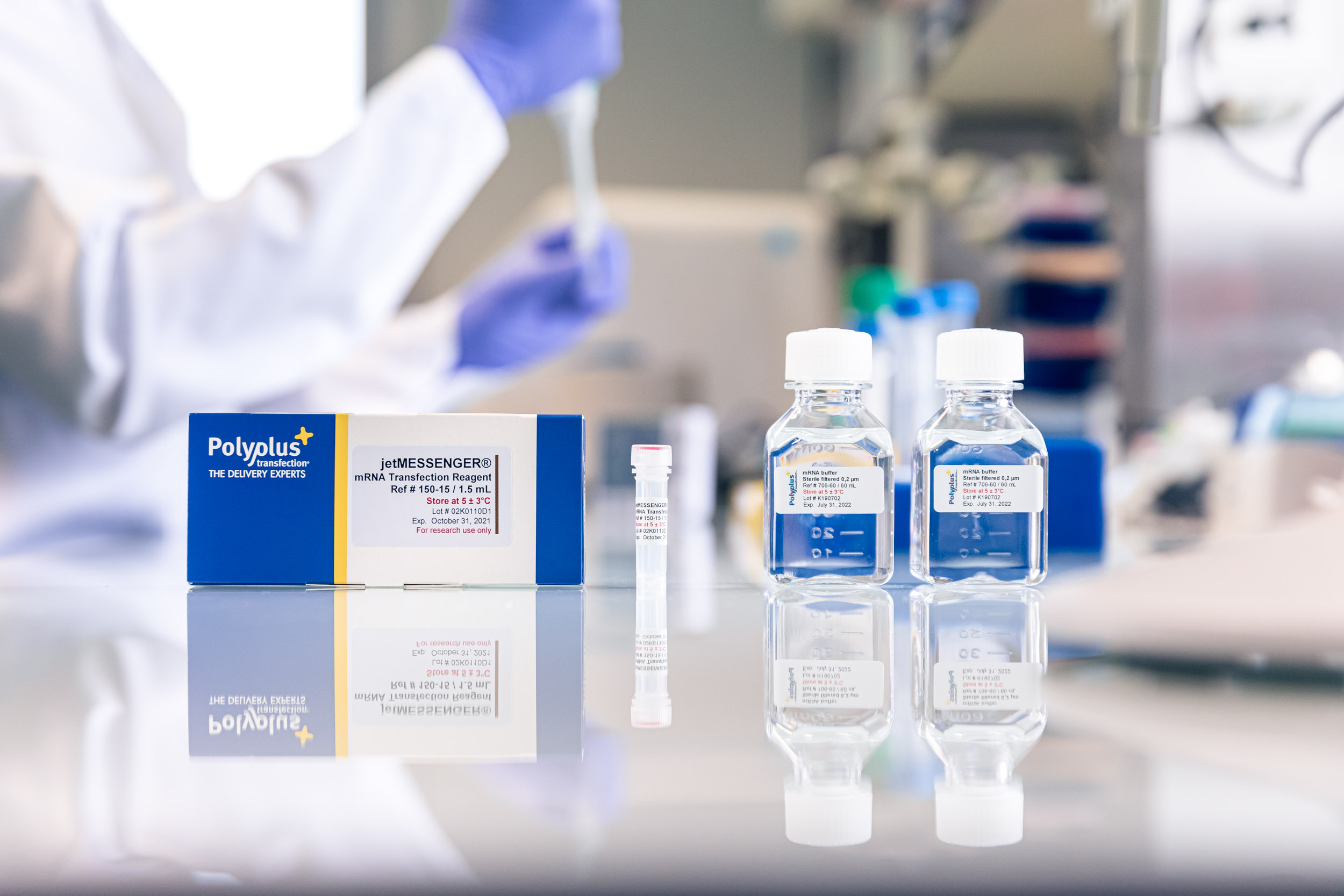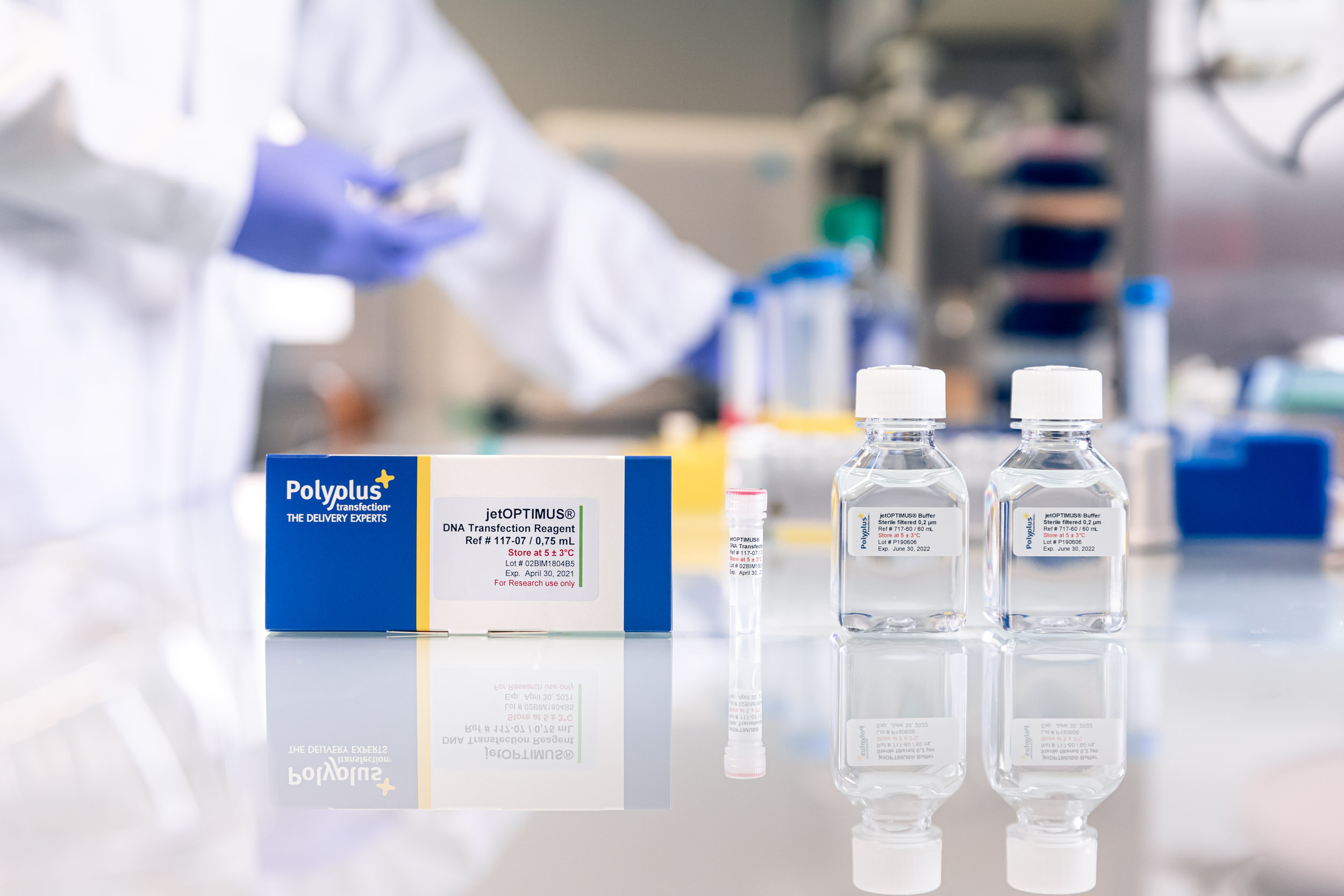Description
Adaptable: target your organ of choice via different administration routes in various animal models, including mice
in vivo-jetRNA® is the reagent of choice to deliver mRNA to various organs using different administration routes (Fig.1). This is attributable to its intrinsic properties: in vivo-jetRNA® protects its payload against ubiquitous endonucleases, prevent non-specific interactions with proteins and promote efficient cell entry.
Choice of the administration route leads to different mRNA biodistribution. in vivo-jetRNA®-mediated mRNA delivery leads to gene expression in numerous organs, through intraperitoneal injection, especially in the spleen and nodes that have a major role in the immune response but also in other organs such as liver, pancreas and uterus (Fig. 2).
Being a non-viral delivery reagent, in vivo-jetRNA® can be safely administered in animals. By avoiding conventional vaccine approaches, it allows to generate a new class of vaccines that rely on direct gene transfer. This concept has several advantages – it is safer for the recipients, faster and cheaper to produce compared to viral vector vaccines or peptide loaded APC (Antigen Presenting Cells), and it has an immense potential to tackle many unmet medical needs.
Fig. 1: Biodistribution of mRNA/in vivo–jetRNA® complexes via different administration routes in mice. Complexes were formed using the recommended conditions with mRNA/in vivo-jetRNA® and were injected via intramuscular, intravenous or intraperitoneal administration routes in mice. Fluorescence signals were observed with Bioluminescence imaging using IVISsystem (PerkinElmer) for both Cy7 (on the left) and Luciferase (on the right).
Fig. 2: Distribution of mRNA delivered by in vivo-jetRNA® in mice through intraperitoneal injection. Complexes were formed using the recommended conditions with luciferase mRNA/in vivo-jetRNA® and were injected via intraperitoneal (IP) administration routes in mice. 24 hours after injection, different organs were extracted and luciferase expression was measured.
Safe: mRNA vaccines without any sign of toxicity
in vivo-jetRNA® is the best choice in terms of safety. There are no secondary effects after injection, all animals remain healthy and no animal pain has been encountered. After administration of mRNA – in vivo-jetRNA® complexes by any administration route, targeted organ remains phenotypically intact and no tissue damage is observed.
Time saving with a ready-to-use solution
in vivo-jetRNA® comes with a simple and straightforward protocol. in vivo-jetRNA®/mRNA complex solution is prepared in two steps and ready to be injected to the animal in 15 minutes: a gain of time with minimal effort (Fig. 4).
Fig. 4: in vivo-jetRNA® protocol. This two-step protocol is suitable with direct injection of in vivo-jetRNA®/mRNA complexes through any systemic or local administration route.








Reviews
There are no reviews yet.